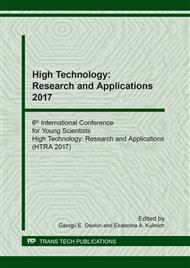p.323
p.329
p.336
p.346
p.352
p.358
p.364
p.371
p.377
Boundary Element Solution for Dynamics of Inhomogeneous Poroviscoelastic Beam
Abstract:
The present paper is dedicated to numerical solution of boundary-value problems for piecewise homogeneous solids in terms of linear three-dimensional poroviscoelasticity. Mathematical model of poroviscoelastic material is based on Biot's model of poroelasticity. Viscoelastic effects refer to a skeleton of porous material and are described through the correspondence principle. Standard linear solid model is employed. In order to study the boundary-value problem boundary integral equations method is applied, and to find their solutions boundary element method for obtaining numerical solutions. A direct version of the BIE method is developed. The boundary-element scheme is constructed using: regularized BIE’s, a matched element-by-element approximation, adaptive numerical integration in combination with a singularity-reducing algorithm. The solution of the original problem is constructed in Laplace transforms, with the subsequent application of the algorithm for numerical inversion. Modified Durbin’s algorithm of numerical inversion of Laplace transform is applied to perform solution in time domain. The problem of poroviscoelastic prismatic solid clamped from one end and free at another is considered. The solid is composed of two subdomains. Heaviside-type load is applied to a free end of the solid. Viscosity parameter influence on dynamic responses of displacements, pore pressure and tractions is studied. Numerical results for displacements and pore pressure when subdomains are modelled with different viscoelastic properties are presented.
Info:
Periodical:
Pages:
352-357
Citation:
Online since:
April 2018
Authors:
Price:
Сopyright:
© 2018 Trans Tech Publications Ltd. All Rights Reserved
Share:
Citation:


